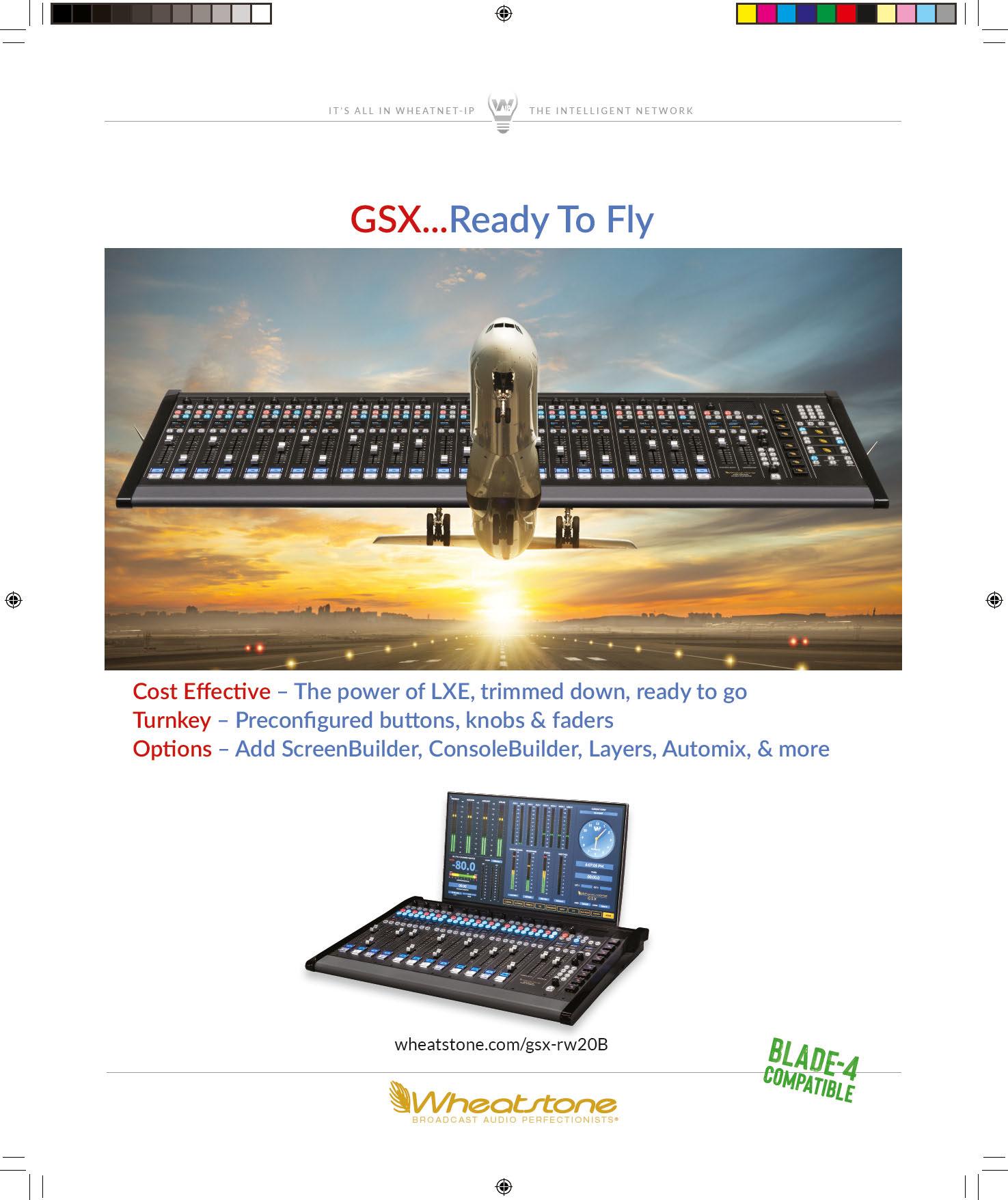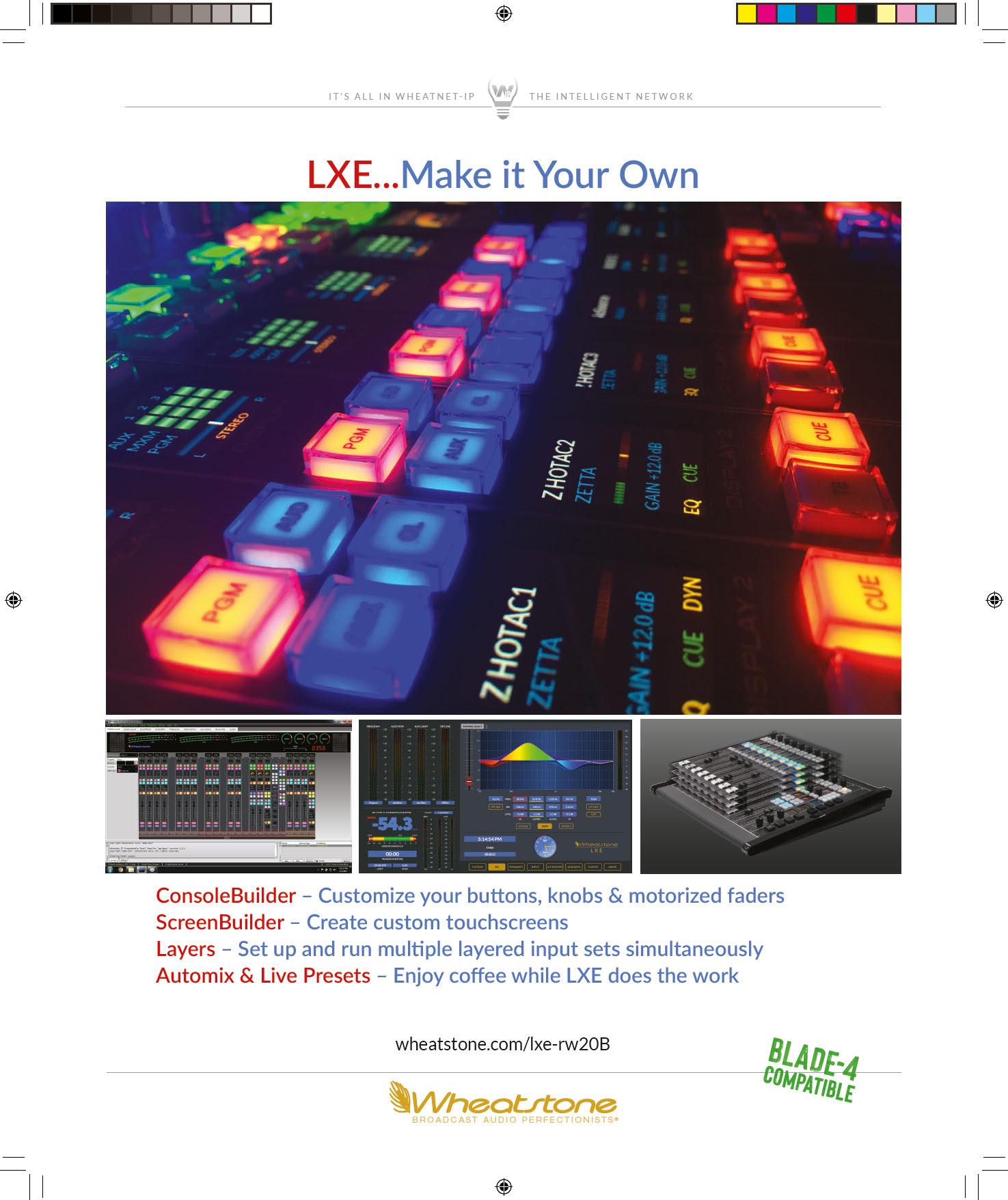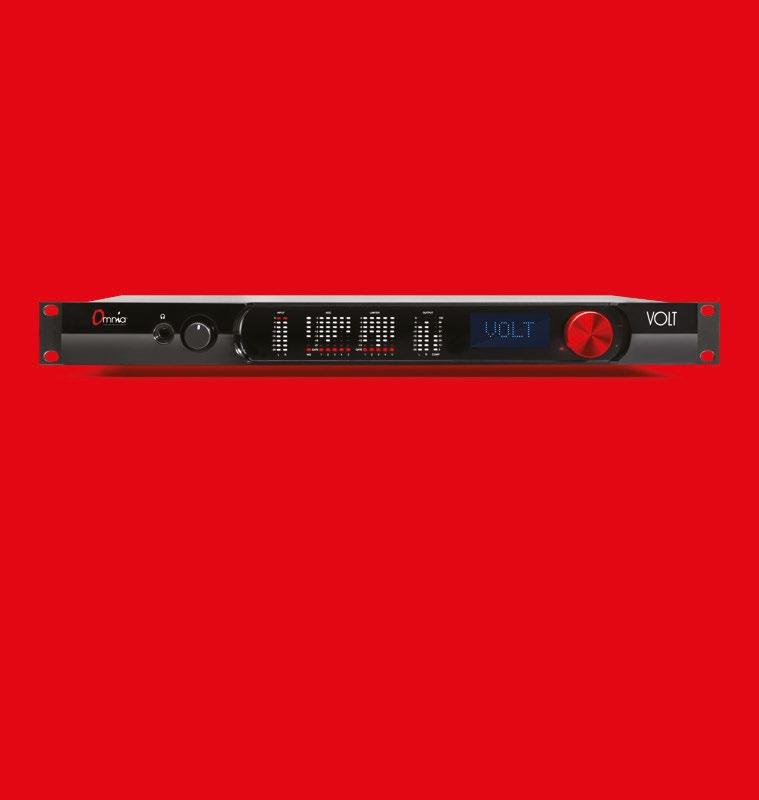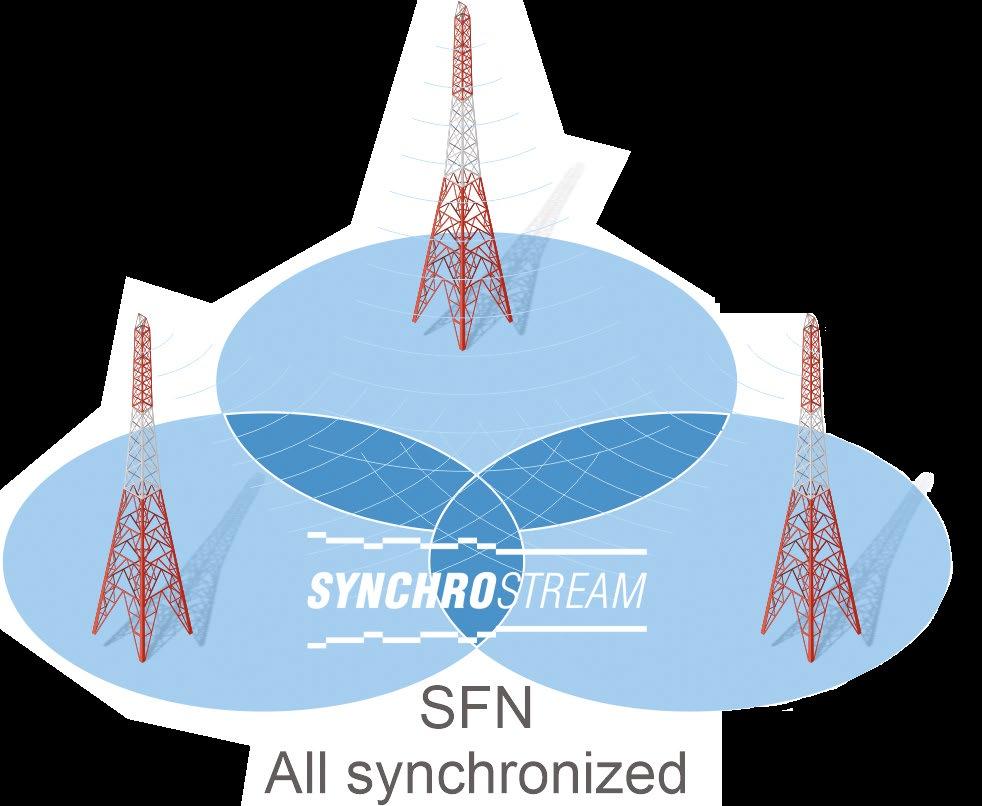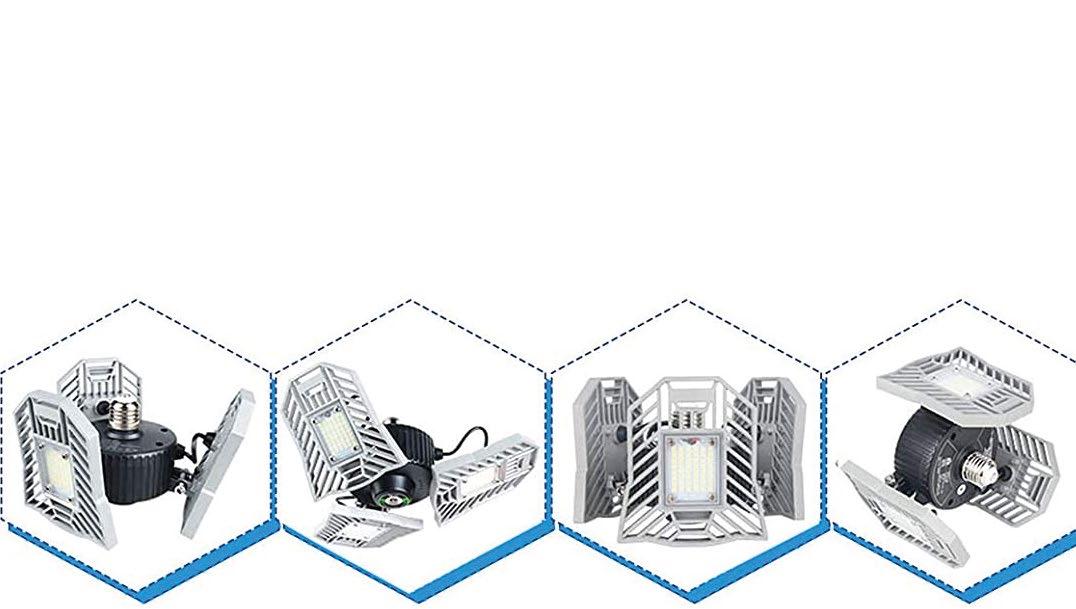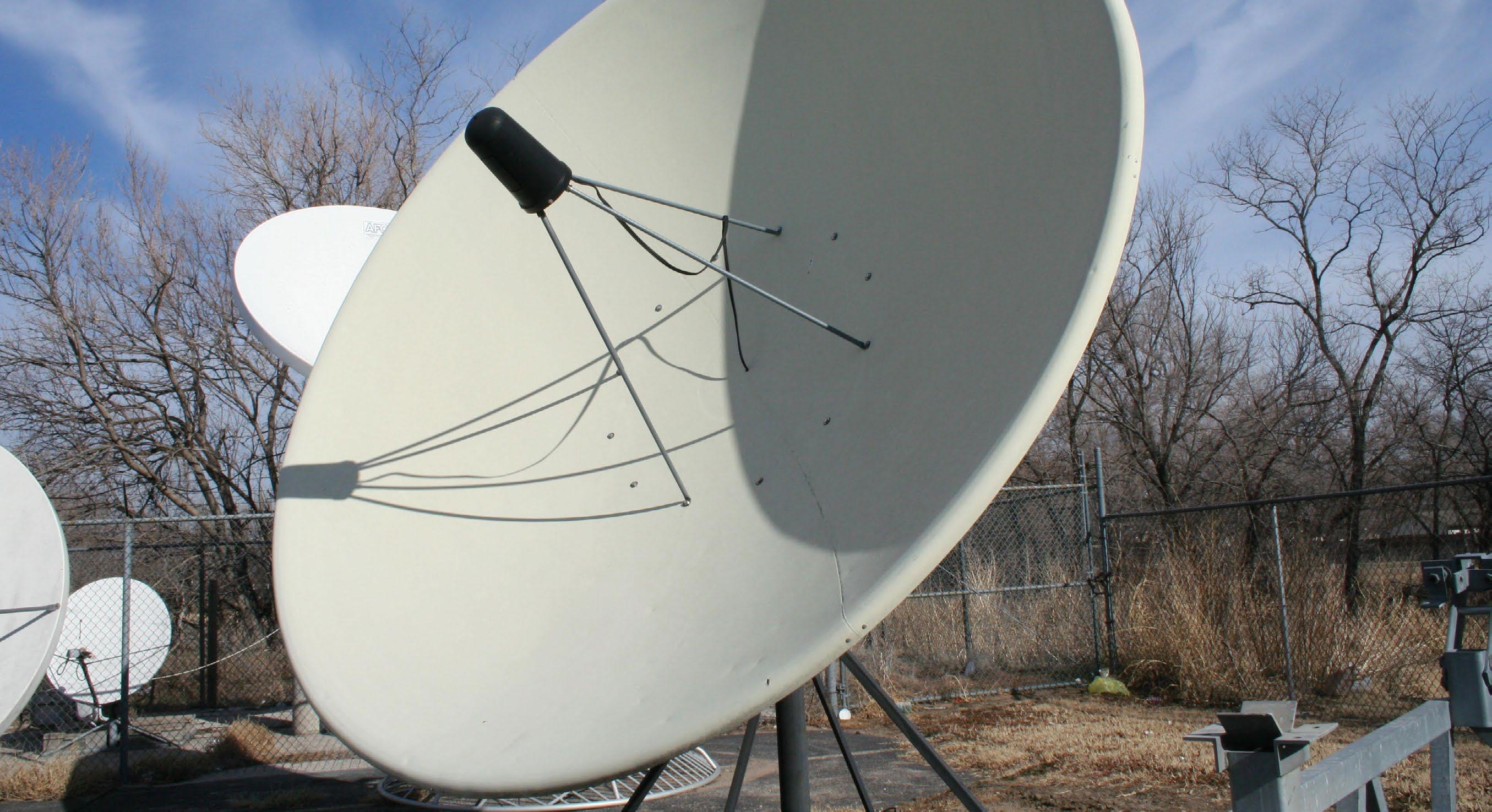
5 minute read
Drury Awards
Thomas worked for his station on the air before reaching his current position.
“High school stations are not that common, especially FCC-licensed stations,” he said. “More and more schools are adding streaming operations, which is great, and some were even able to grab an LPFM license, but overall it’s a small percentage of stations out there. I don’t have a precise number, but we were able to find about 180 high school stations including FM, AM, LPFM and online, that are student-run.”
How does one go about funding this type of station? Thomas gets some money from his administration but also holds an annual on-air pledge drive.
“The school is generous enough to ensure we have what we need in personnel, studio space and basic equipment,” he said. “But our fundraiser allows us to give the students what they will see elsewhere when they leave WLTL. For example, we purchased Axia iQ control boards, Comrex Access units and other equipment such as laptops, ElectroVoice RE20 microphones, Zoom H4n handheld recorders and Shure SM57 microphones. On average we’ll pull in about $25,000 from community members and businesses.”
Thomas, like DeWitz, sees radio interests shifting in young people.
“Podcasting and creating online content are huge areas right now,” said Thomas. “The students are also interested in audio production and we’re happy to help them.
“The other thing I see is more interest in news, especially in light of what has been happening over the last few years. I see more students interested in how news works, which is encouraging.”
Thomas does not agree with the oft-expressed opinion that radio is dying.
“Anyone who feels that way is invited to tune in to not only WLTL, but any high school or college station and hear what today’s students are doing with the medium. It may not be the radio we grew up on, because how we create content will continue to evolve and adapt. It’s a blessing to be part of it and watch the next generation of broadcasters.”
More than 50%of new vehicles ship with HD Radio technology
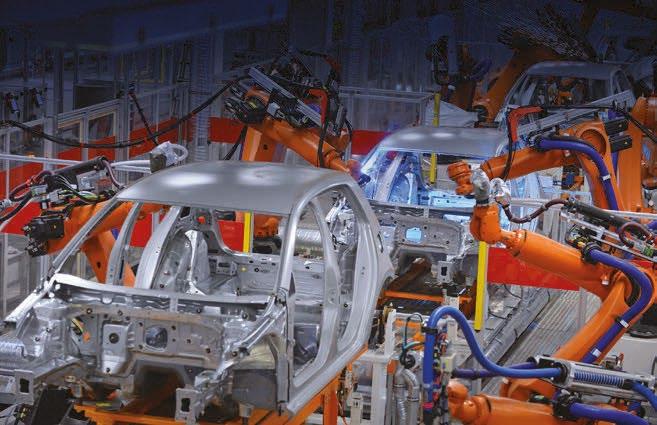
A little of this, a little of that
Dave Juday is a radio/audio production instructor at East Valley Institute of Technology in Mesa, Ariz. The student station at this Career and Technical Education high school is KPNG(FM), “The Pulse.”
“Our students are juniors and seniors who spend half their day with us and the other half tackling regular high school core classes,” he said.
“Our station is 15,000 watts and covers most of the Phoenix metro area, and we have a state-of-the-art digital recording studio here. While the students are with us, they are trained in commercial, promo, PSA and show production as well as music creation. The course also covers broadcast journalism, sports play-by-play and even engineering for live events.”
Juday said that many of his students are not necessarily interested in being on the air.
“Because our program covers so many aspects of radio and broadcast production the students have a lot of opportunities within ‘The Pulse.’ We have had several students go on to work in promotions, production and on-air positions in the Phoenix market, and we had one student who is the broadcasting and media content coordinator for the Oakland Athletics baseball team,” he said.
“The more versatile our students are, the more employable they are when they leave us. It’s possible that their first job in radio won’t be exactly what they were looking for, but chances are it could eventually lead to a position they are passionate about.”
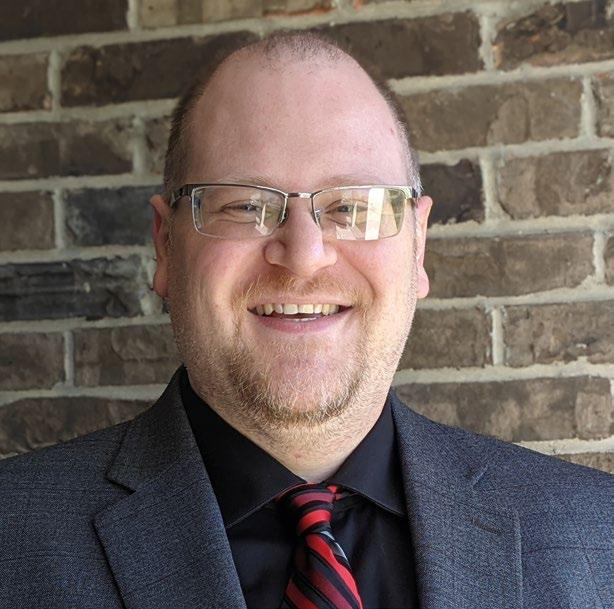
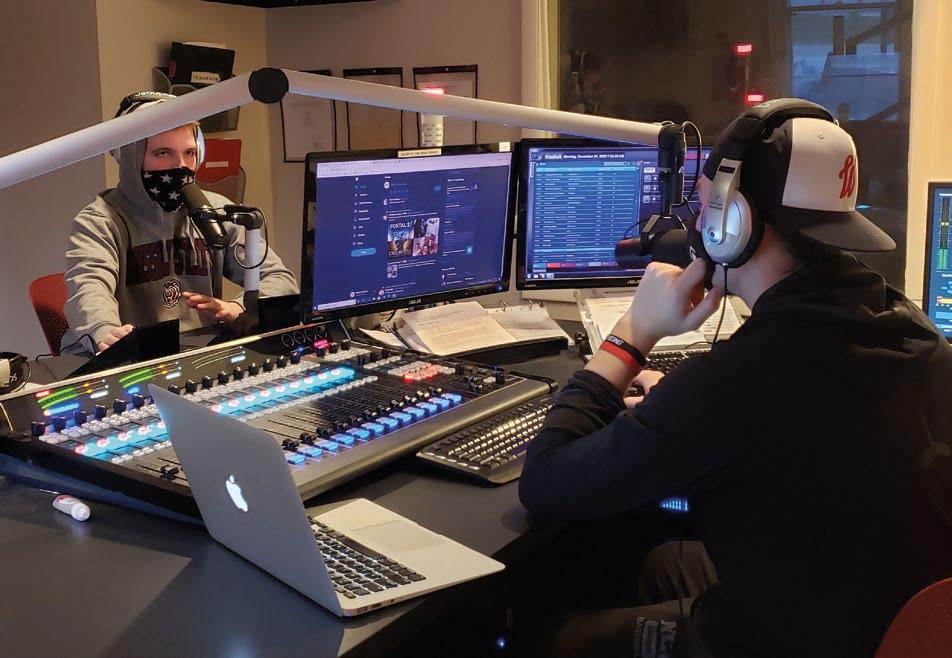
Top left Evan Dean, Josh Simon, Spencer Cihak and Zach Larson of KPFG(FM) at Chase Field in Phoenix.
Top right Zach DeWitz
Above Sam Corbett, left, and Jake Salzbrunn in Studio A of WONC(FM) at North Central College in Naperville, Ill.

Writer Edwin Bukont
is with E2 Technical Services & Solutions, offering media systems consulting and engineering including networked audio, video and A/V over IP.
Comment
on this or any story to radioworld@ futurenet.com.
Maxger/Getty Images
I.T. is the platform on which we broadcast
It’s no longer a backend function, you need to learn the language
Planning a new studio system based on audio over internet protocol begins with what we have always done. First, the number of rooms is settled on, then the capabilities of each room are defined by their function. While many new studio builds now include cameras and more large video screens than in the past, for the most part studio rooms are built to perform similar functions. There the similarities end.
Broadcast integrators and equipment installers have always been the last in the project timeline and often crashed in the past because of their requirement for pointto-point, “single channel per wire” topology. Studios had all the audio gear and needed huge cable bundles to a tech core with an under-utilized and massive infrastructure. No longer!
Packet switched networks using IP encapsulation and centralized digital storage controlled remotely mean studios have little equipment in them, and the entire audio system has moved to an IT core where single boxes do multiple things.
This centralization is enabled by audio signals that are controlled and distributed as streams combined on a single cable between two points, where many, even thousands, of signals are carried on just four pairs. The efficiency of data technology developed by the information technology industry for personal computers has been repurposed to make the installation of audio systems less wire-intensive, less expensive and more flexible at the same time.
Welcome to AoIP.
Speak the local language
To best take advantage of the world of IT, you must blend in with its practitioners. The IT team can be of great assistance in building out your state-of-the-art studio complex, or it can be one of your greatest hindrances. You want to keep them on your side as much as possible.
Learn proper use of IT terms, because those with an IT background usually have no idea of ours.
Modern networks run on switches and routers according to the OSI model. Hubs are not used. There are no such things as “network switchers” or “switching hubs.”
Their routers are not the same as what we term an audio router. Nodes are items that create the network. This includes routers to guide packet traffic between networks, and switches that provide a connection point to the network. Endpoints are purpose-specific devices. For example, an audio console/video production switcher

